 This guibbone (doublet) is based on a number of images of similar garments. The common features are:
This guibbone (doublet) is based on a number of images of similar garments. The common features are:
- wide, round neckline
- center front opening (often unfastened at the top)
- sleeves that are full to below the elbow, then narrower (but not tight) below that
- a square front panel up to the mid-chest
The first step is to create the body that all the other pieces will attach to. The outer shell is green silk taffeta, interlined with cotton canvas for stiffness, then lined with medium weight white linen.
Since the heavy interlining made bag lining impossible and there was no evidence of a bound edge in the images, I decided to cut the interlining without seam allowance and wrap the silk around the edge, then sew the lining in by hand. The side, back, and shoulder seams were done by machine, and then it was just a lot of hand sewing to get all the layers together. Normally I would do a lot of basting to keep thing in place while sewing, but taffeta is very bad about showing pin holes. Instead, I used mini binder clips to hold the edges together as I worked on them. It worked surprisingly well, despite being a little cumbersome.
The front is closed with seven pairs of hand made hooks and eyes sewn in under the lining.
Initial pattern
Trimming down the neck opening
Final pattern
Basting the test swatch
Wrapping the edge of the test swatch
Lining the test swatch
All three layers
Wrapping the edge
Wrapping the edge
Still wrapping the edges
Clipping in the lining
Sewing the lining
Sewing more lining
Sewing hooks and eyes

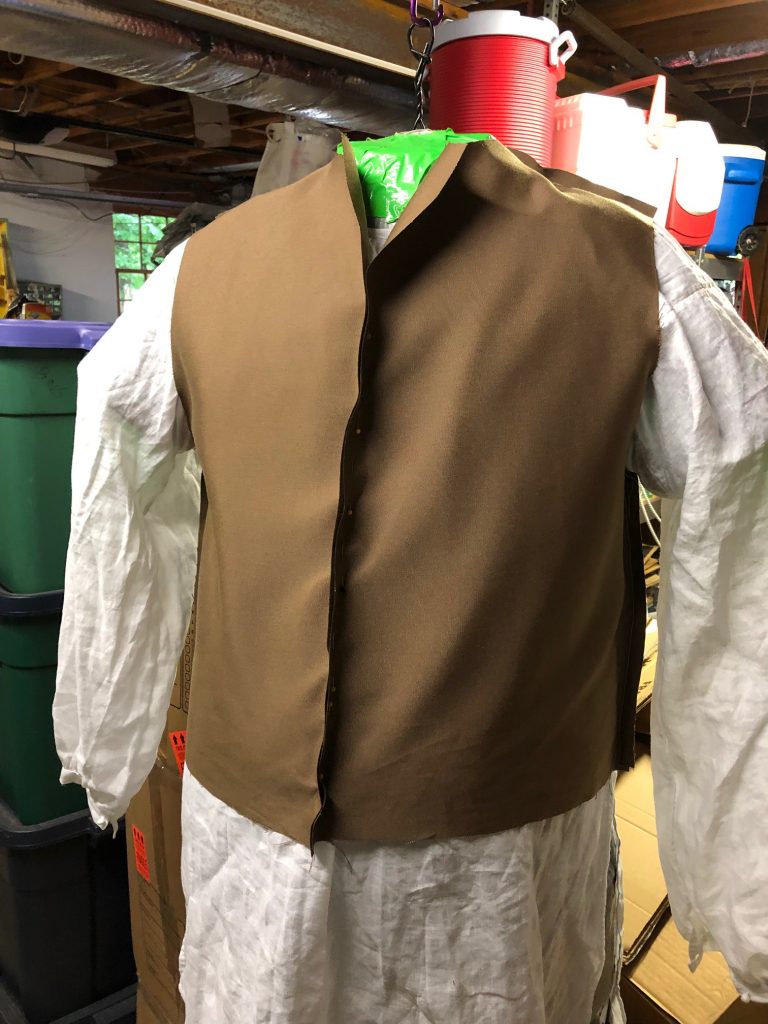
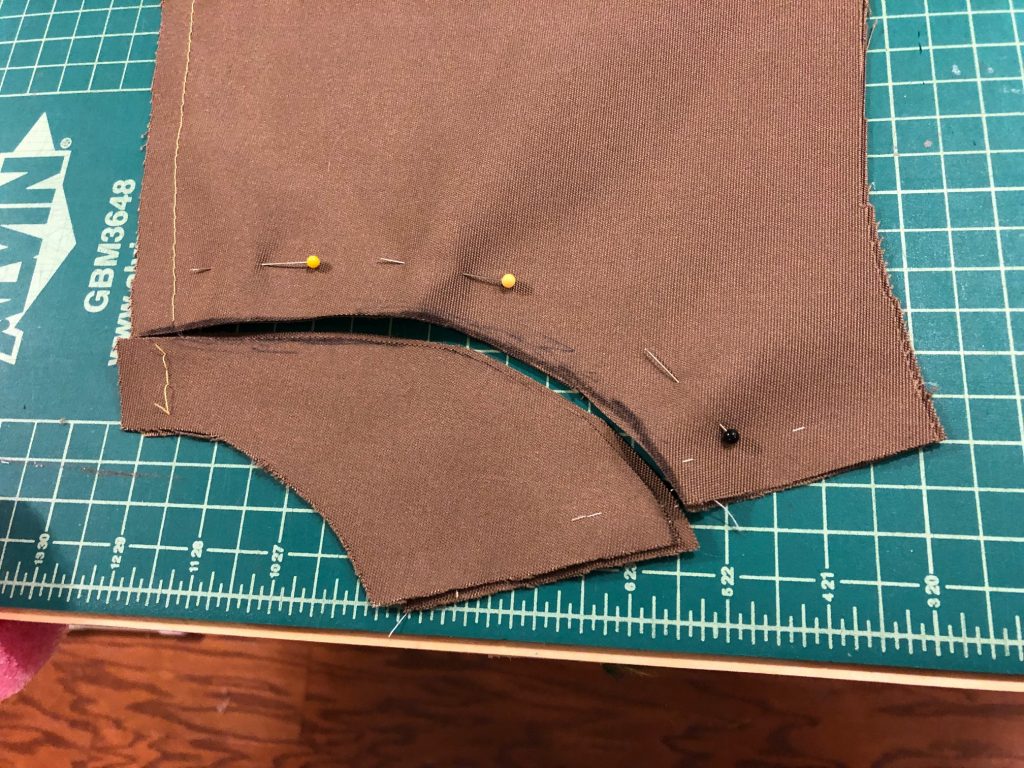
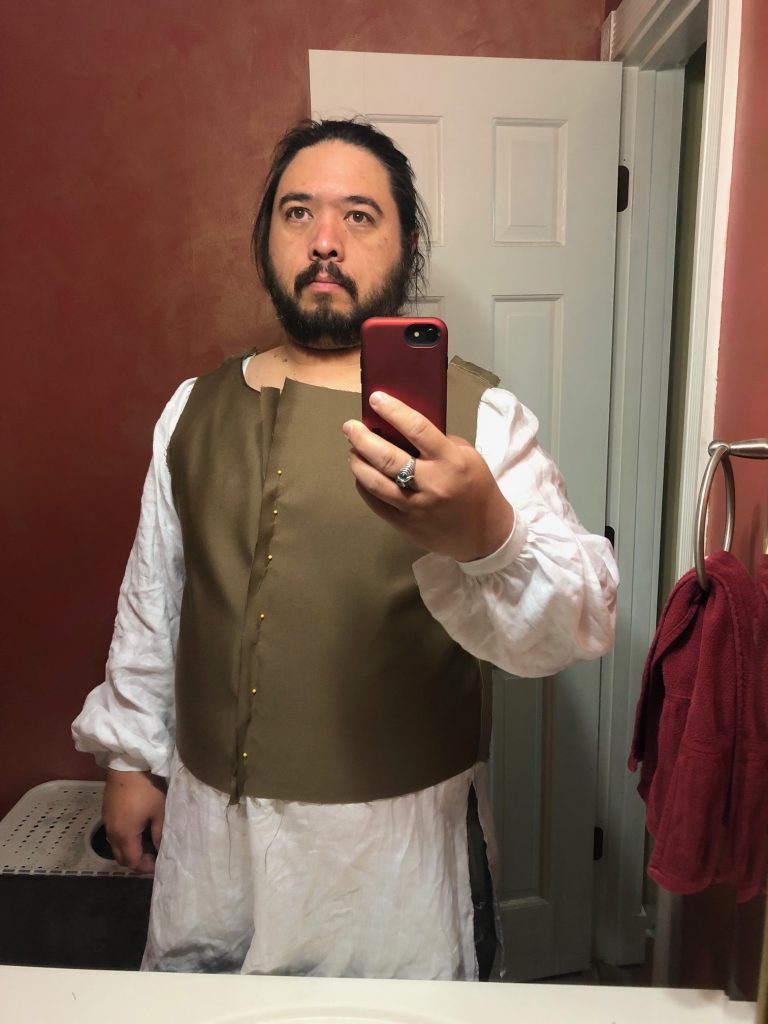
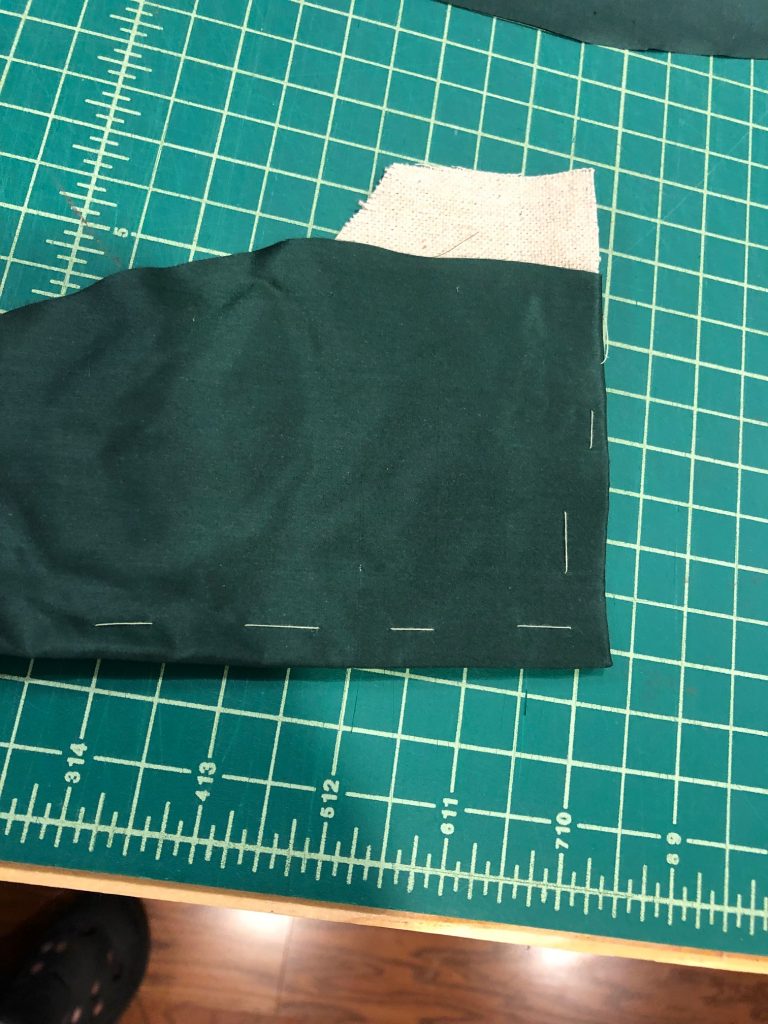
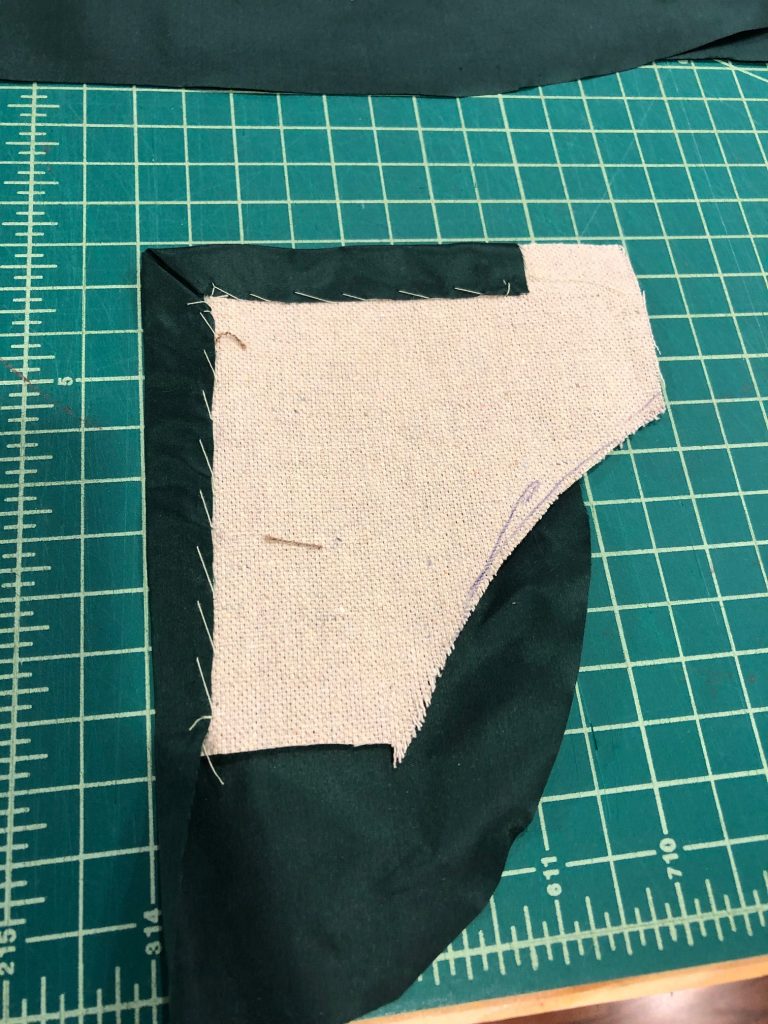
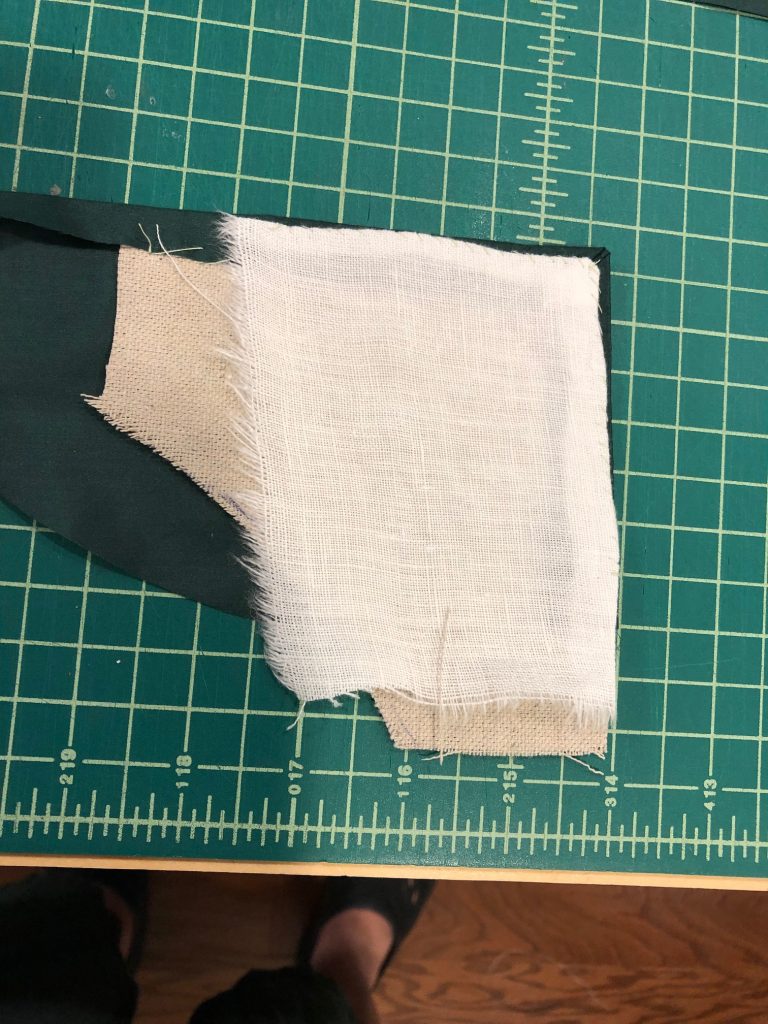
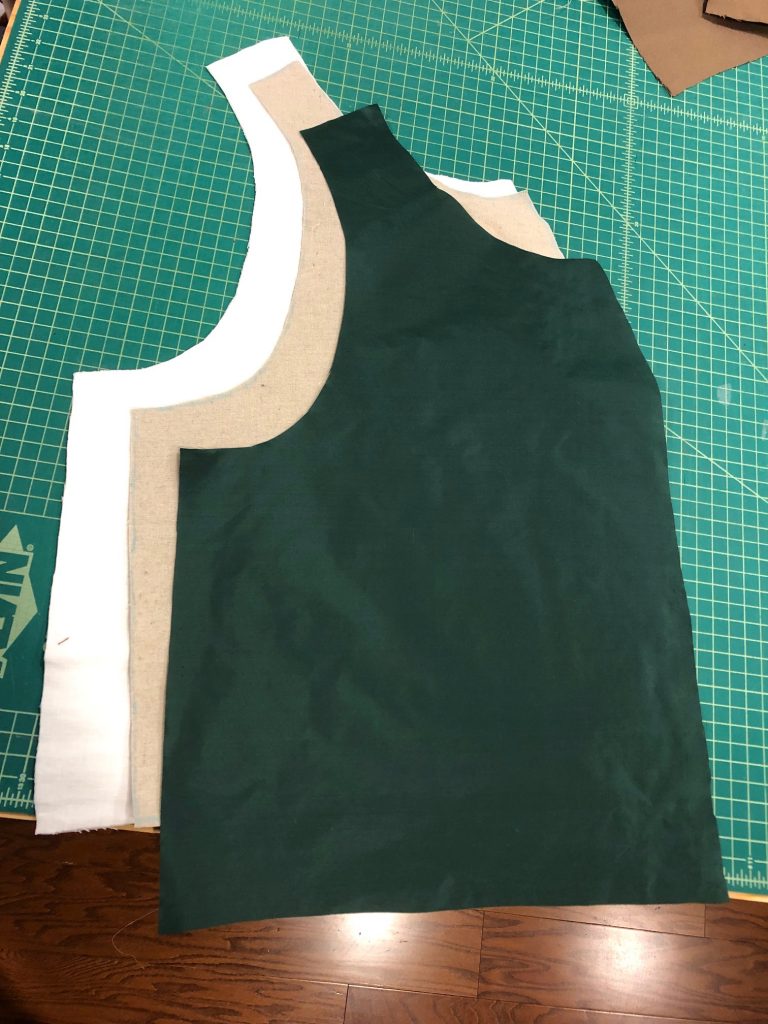
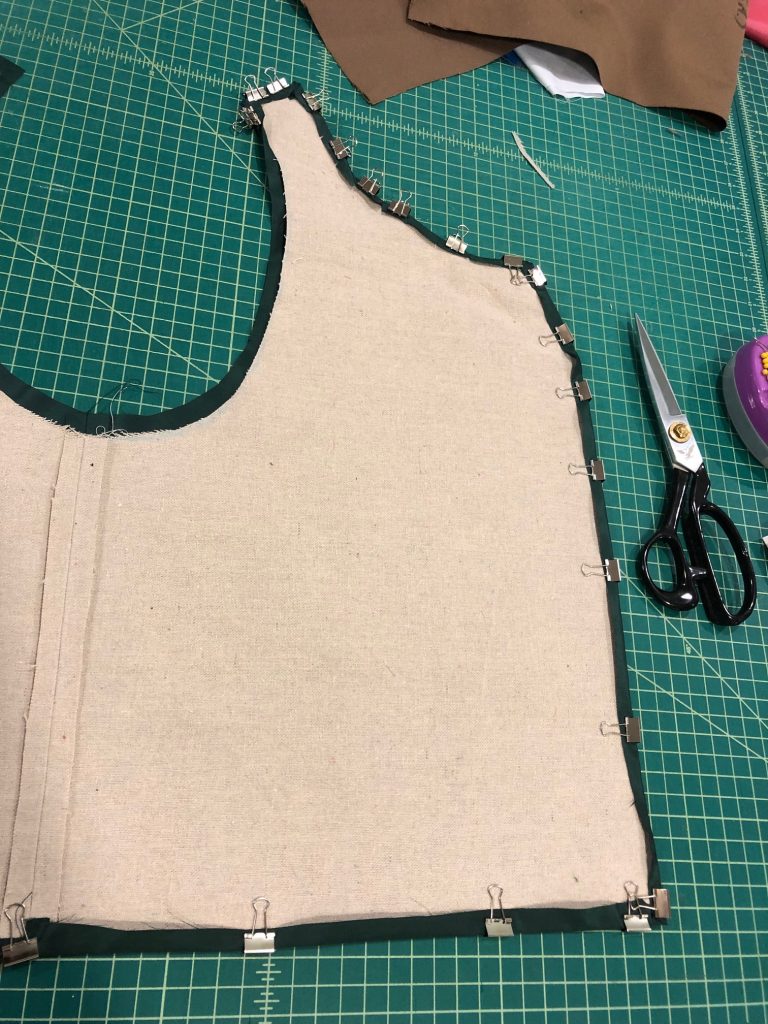
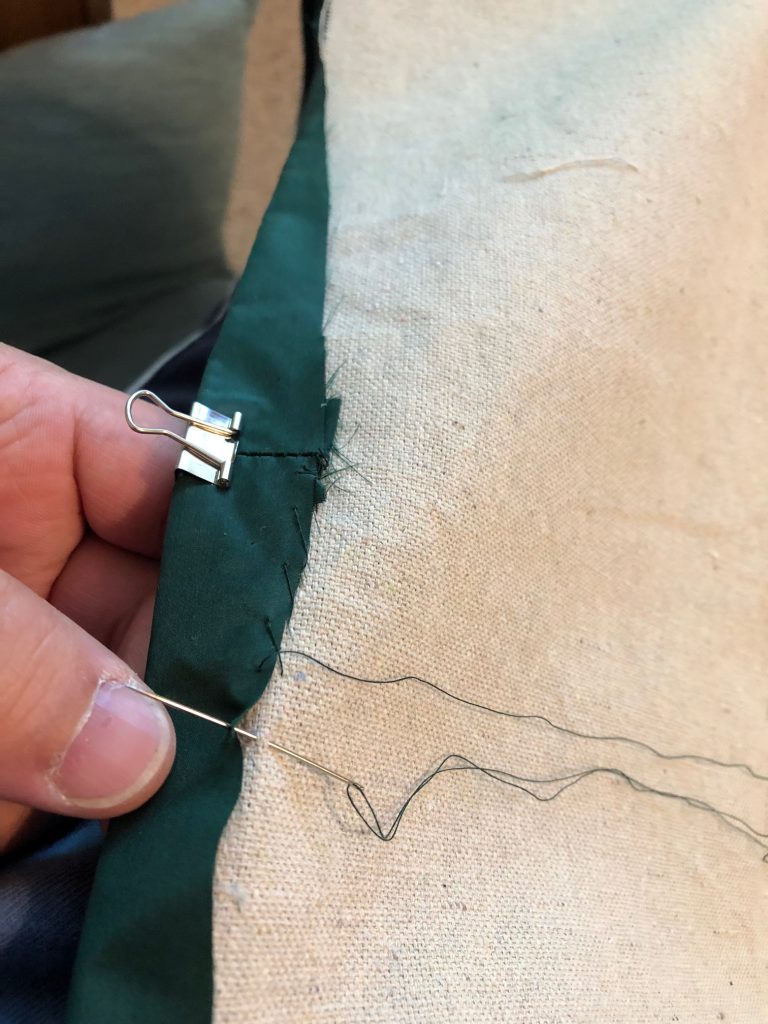
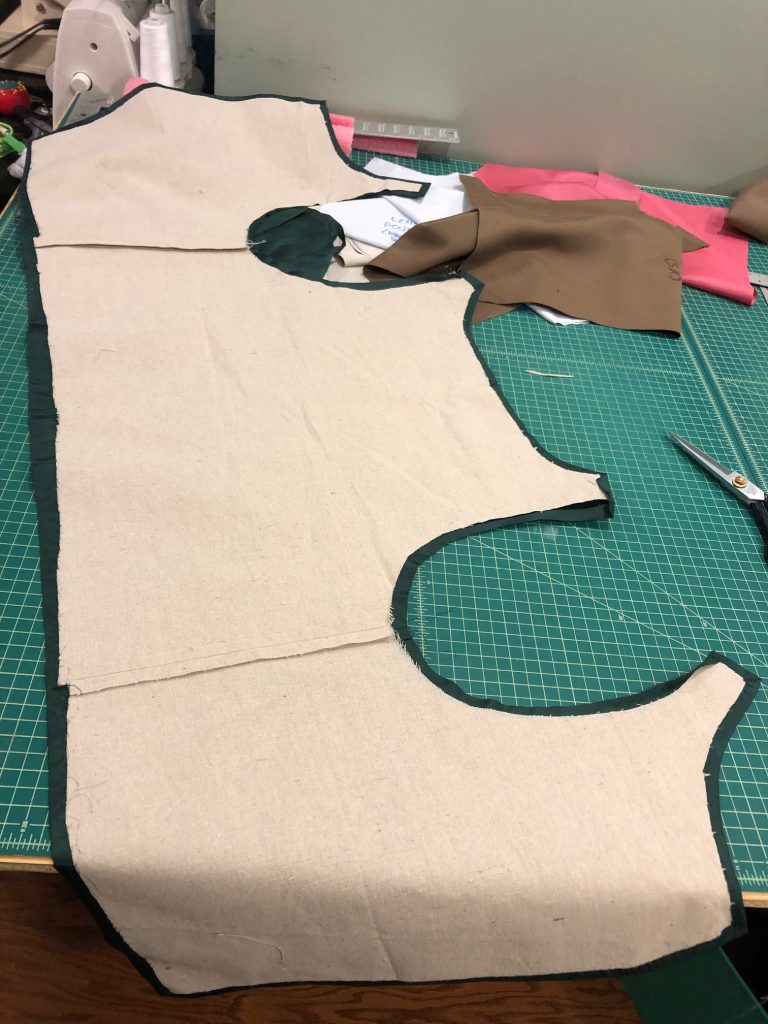
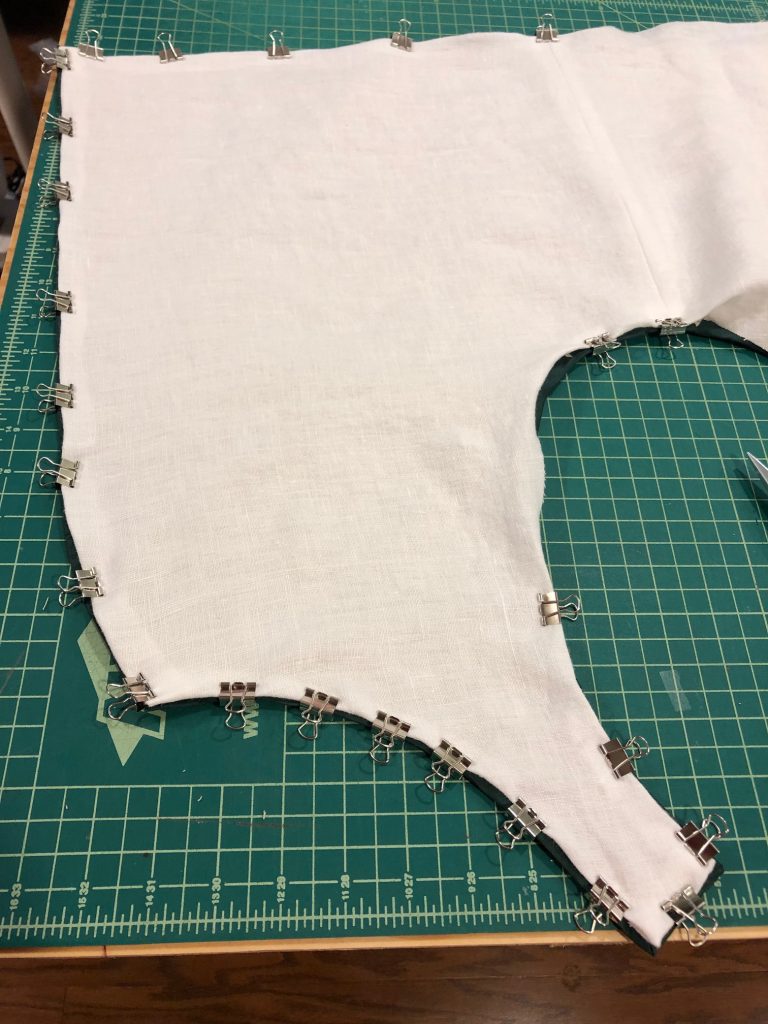
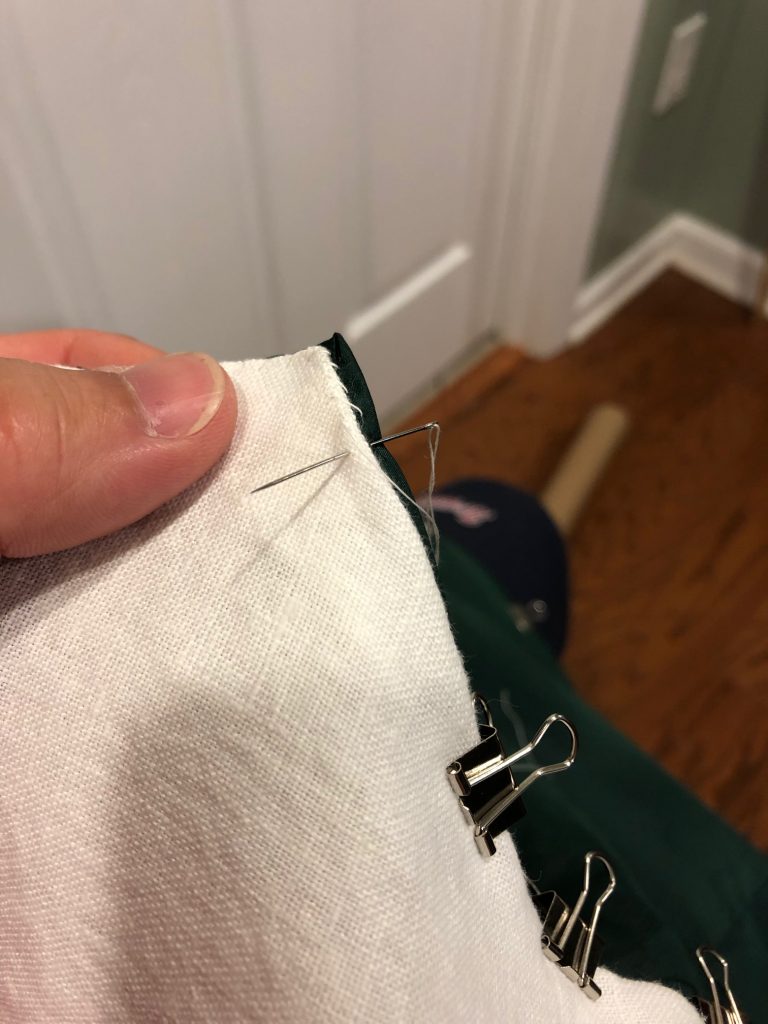
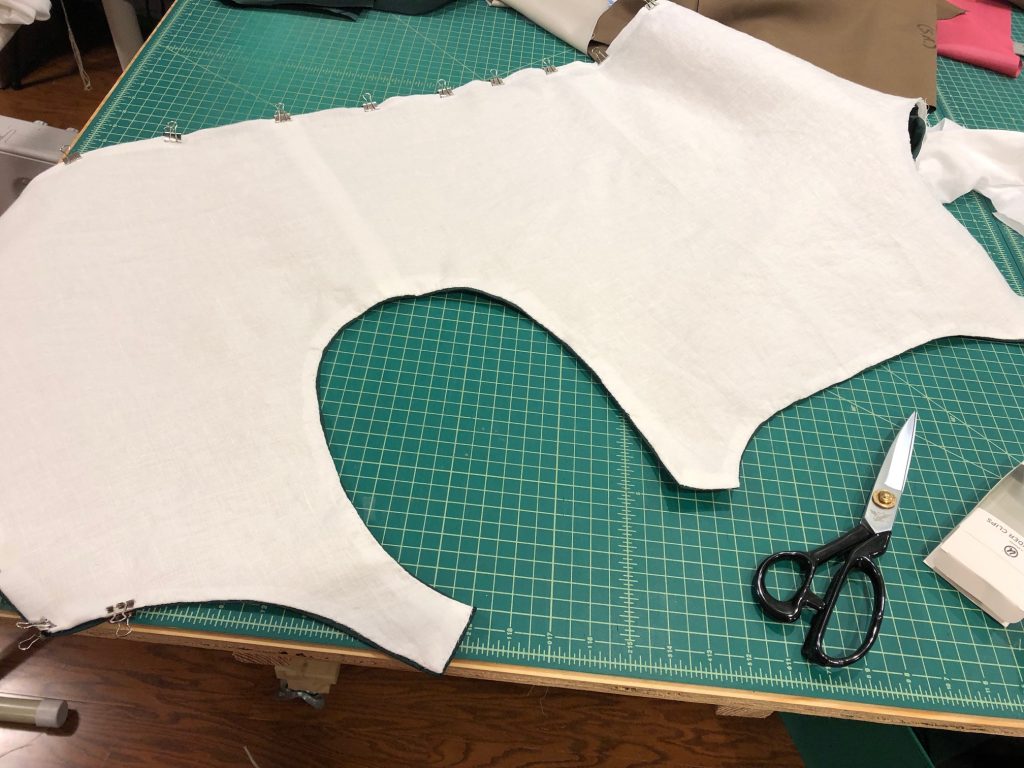
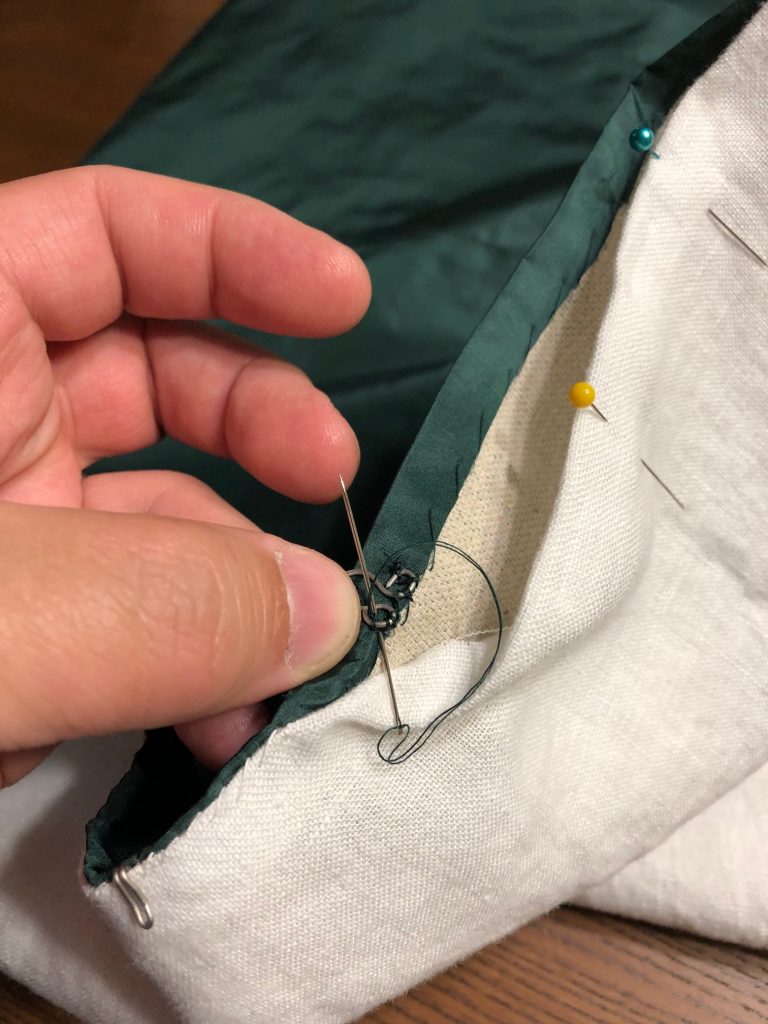
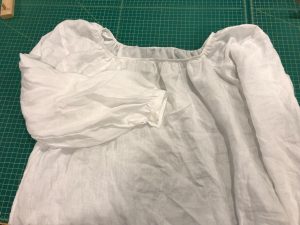
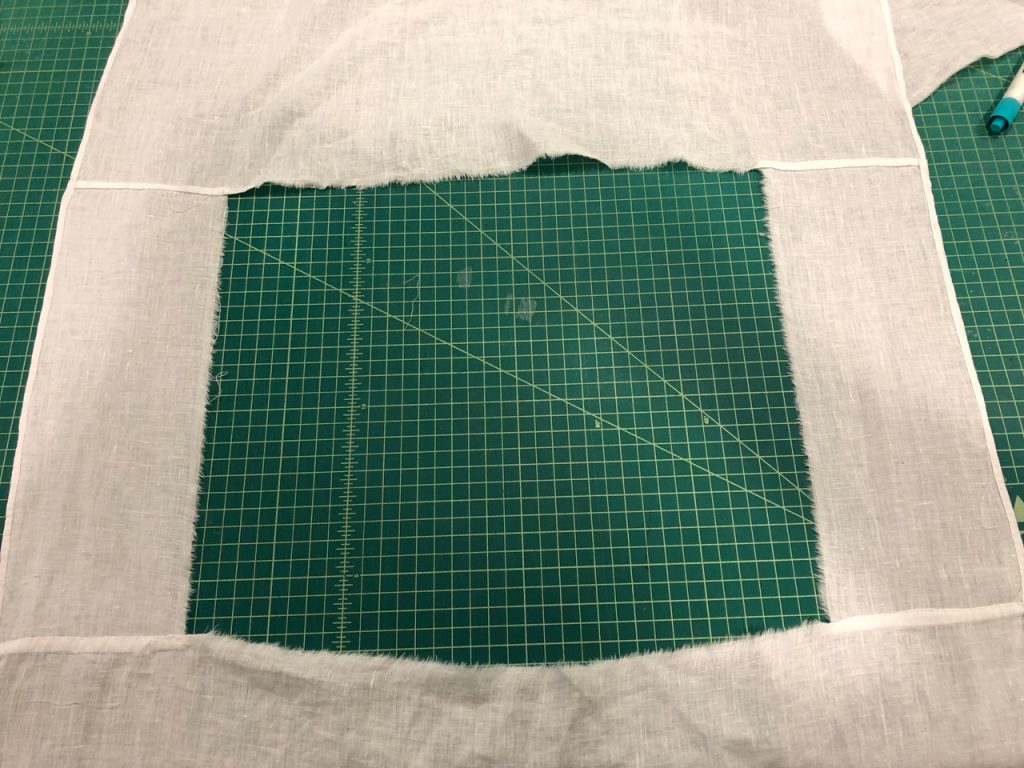
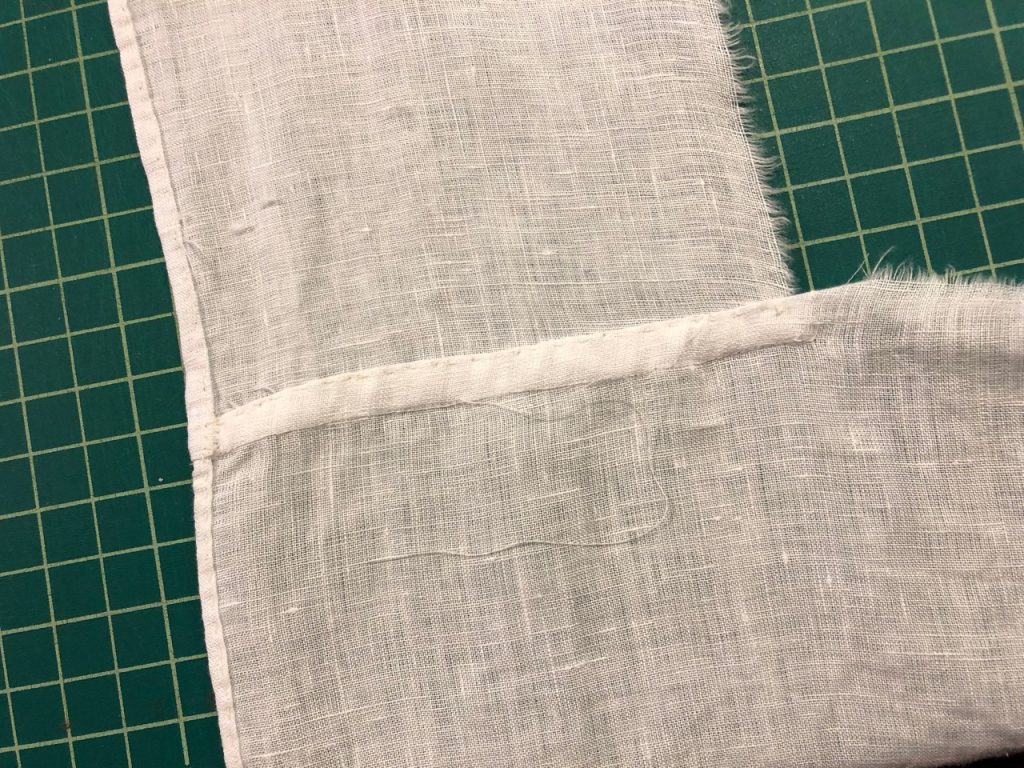
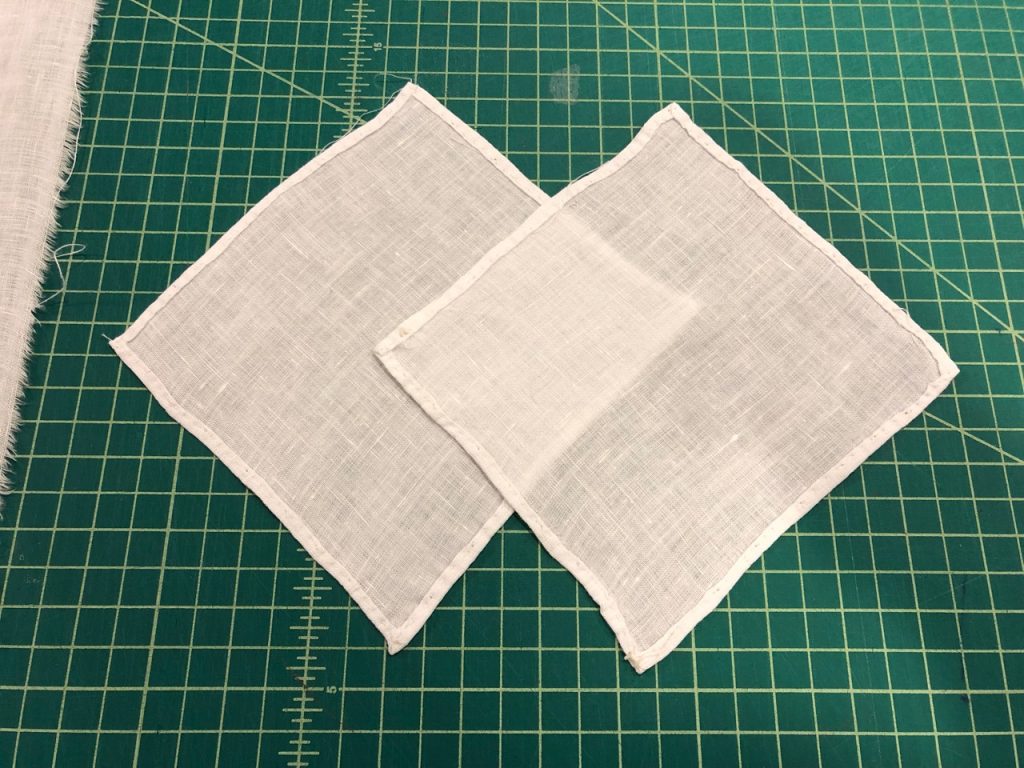
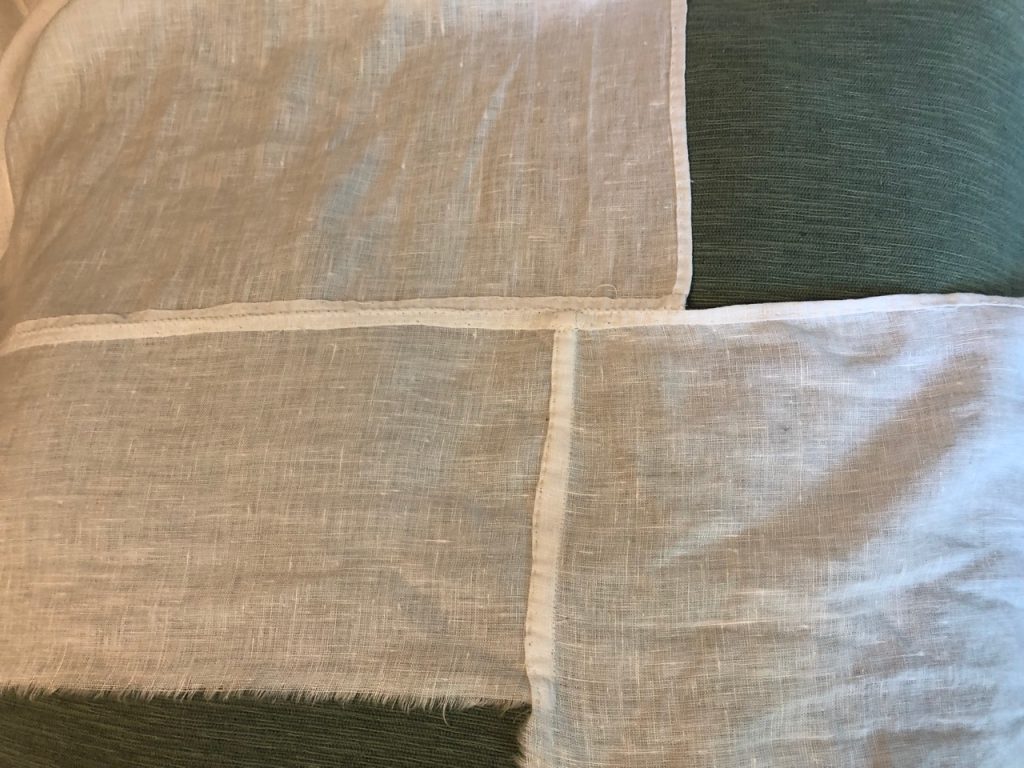
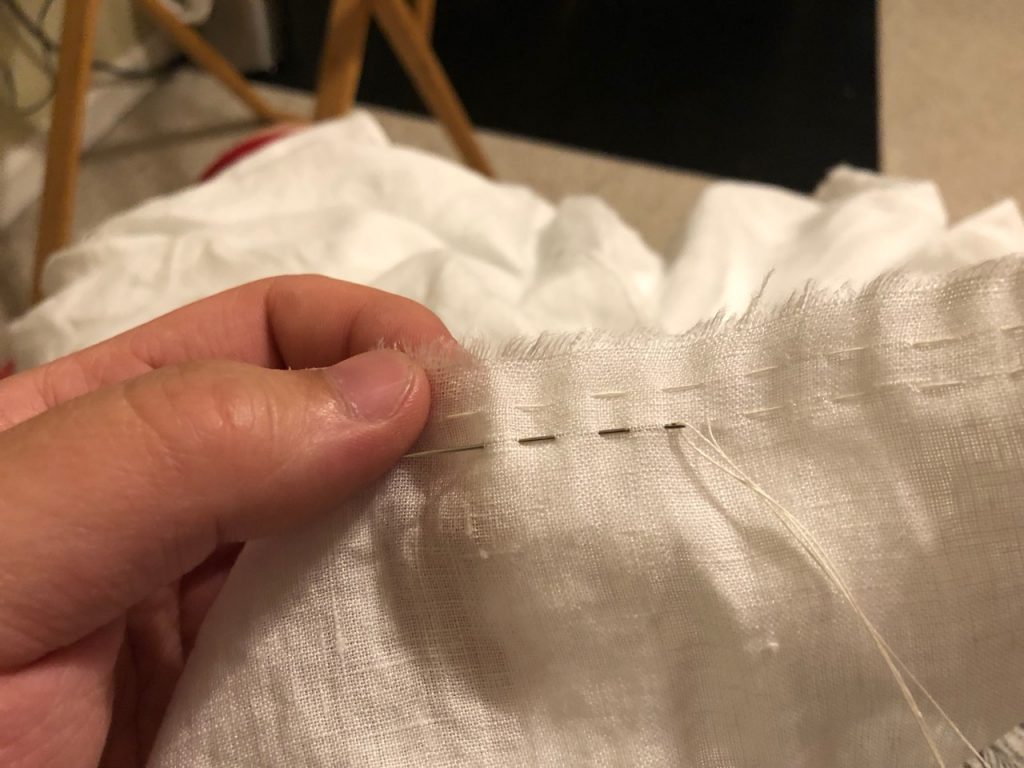
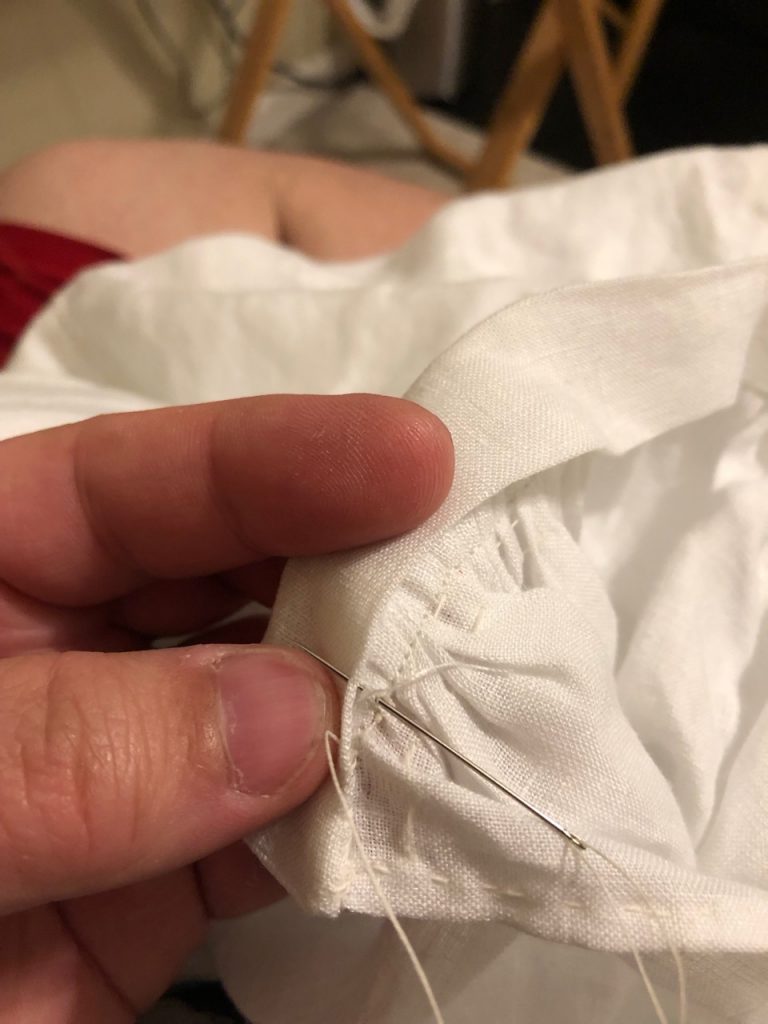
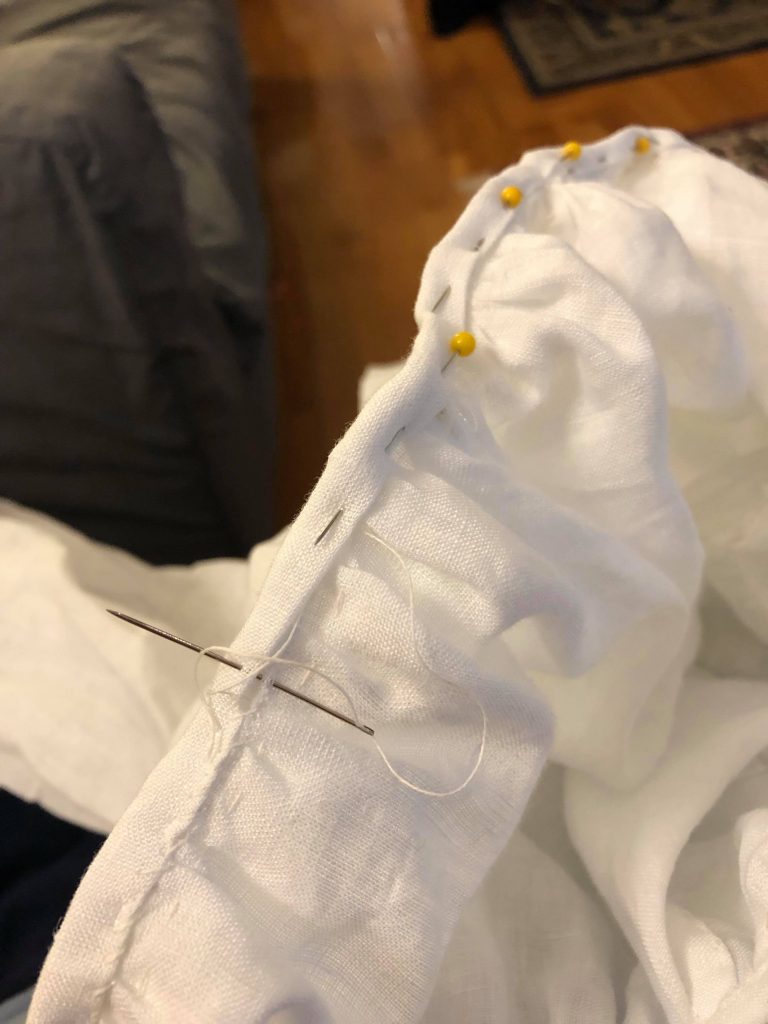
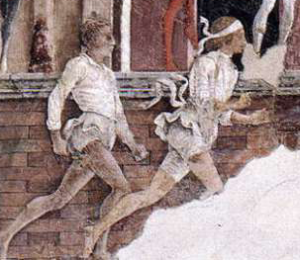
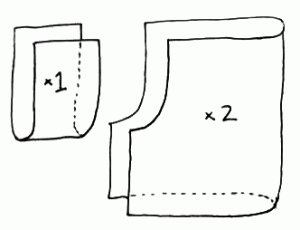 I have used several different patterns for these over the years, but in this instance I chose to make two separate legs with a curved crotch seam and a rectangular panel between them. I added a casing and drawstring at the top.
I have used several different patterns for these over the years, but in this instance I chose to make two separate legs with a curved crotch seam and a rectangular panel between them. I added a casing and drawstring at the top.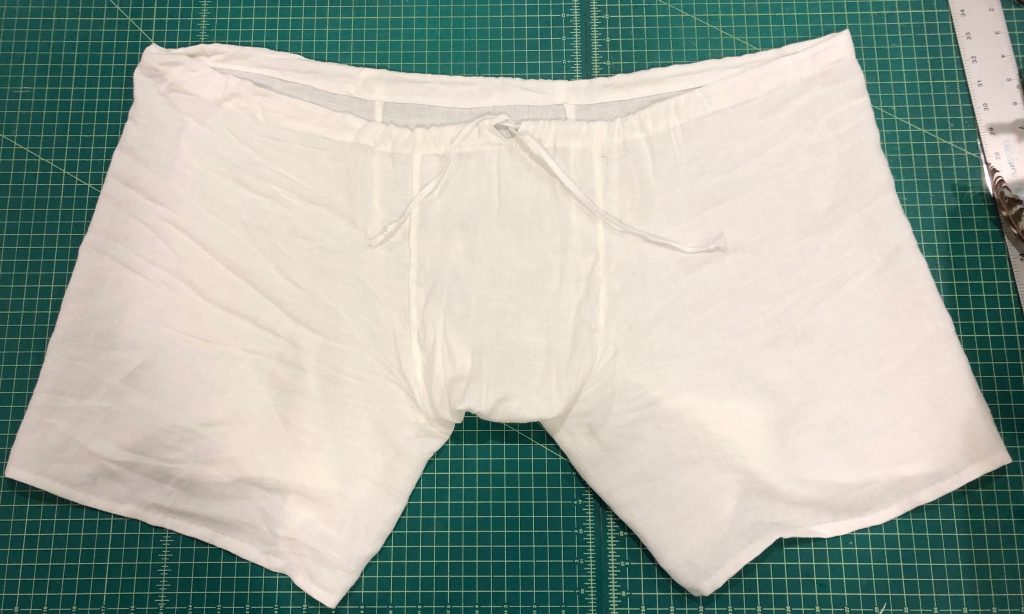

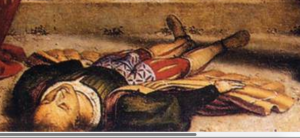 The first layer of the outfit will be brache (drawers) and camicia (shirt), both made from linen. Next will be a guibbone (doublet) of silk and calze (hose) divided into upper and lower parts, both made of wool. The outermost layer will be a saio (gown) made of wool lined with silk.
The first layer of the outfit will be brache (drawers) and camicia (shirt), both made from linen. Next will be a guibbone (doublet) of silk and calze (hose) divided into upper and lower parts, both made of wool. The outermost layer will be a saio (gown) made of wool lined with silk.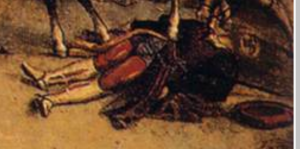 I will not be including the riding boots shown in the image, but will likely be making some sort of hat (one can be seen in the right side of the painting, but there is little detail as to its shape). I have already acquired the fabrics I plan to use, assuming all goes to plan.
I will not be including the riding boots shown in the image, but will likely be making some sort of hat (one can be seen in the right side of the painting, but there is little detail as to its shape). I have already acquired the fabrics I plan to use, assuming all goes to plan.